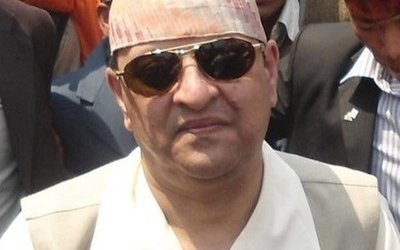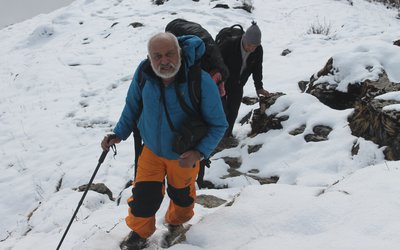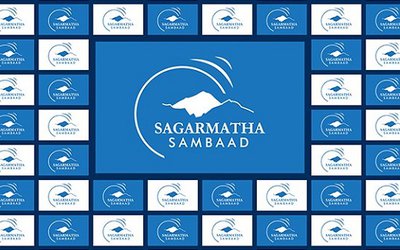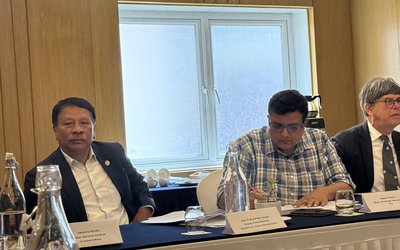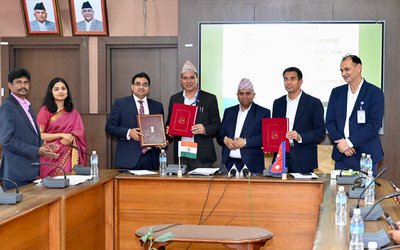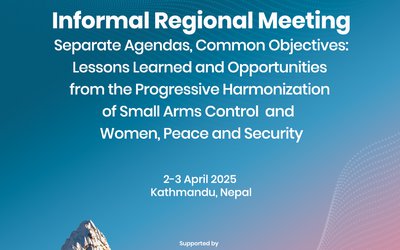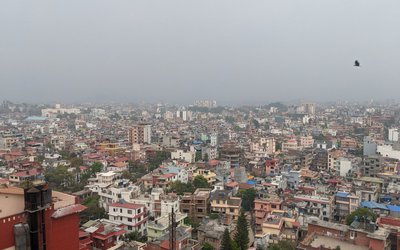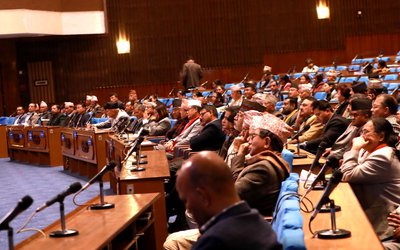
The world is moving in the direction of the union of independent countries establishing a powerful single central governing body by ceding to a significant extent the sovereignty of member countries. Even the vast country India with great socio- economic diversity has adopted only quasi federal system and is ruled by a strong central government.
Surprisingly a relatively small country Nepal is claiming to have adopted decentralized federal system perhaps without fully analyzing all aspects of this system to determine its suitability to our country. The recent controversy over Kali-Gandaki dams and diversion is an indication that it would prove very hard to develop our water resources in broader national interest of our country due to interstate disputes.
Kali-Gandaki Dams and Diversion
There are four hydro projects described in the Gandak Basin Master Plan, which are located near the confluence of the Andhi Khola and Kali-Gandaki ……. They are (1) Kali-Gandaki 1 ; (2) Kali-Gandaki 2; (3) Kali-Gandaki A; and (4) Kali-Gandaki Tinau Diversion Project.
Kali-Gandaki 1 is a very big storage dam hydropower project. This project involves submergence of a vast area of densely populated region of Andhi Khola valley. The 144 MW Kali-Gandaki A Project has already been built in substitute for Kali-Gandaki 1 taking full consideration the fact that Kali-Gandaki 1 and Kali-Gandaki A are mutually exclusive of one another.
Kali-Gandaki 2 is also a relatively big storage dam hydropower project. This project and the Kali-Gandaki Diversion Project are mutually exclusive of one another.
Contention of PROVINCE-IV
The Kali-Gandaki Tinau Diversion is a very important multi-purpose project to provide irrigation water to TERAI region of the PROVINCE-V.
It appears that the PROVINCE-IV is claiming that almost the entire water of the Kali-Gandaki is originating from catchment area within its territorial boundary. Thus Kali-Gandaki Tinau diversion project earmarked to irrigate PROVINCE-V should not be allowed since this diversion project and the Kali-Gandaki 2 project are mutually exclusive of one another.
The Kali-Gandaki diversion project dispute is indeed going to be only the beginning of a series of interstate disputes over implementation of water resources projects in our country.
Union of European Countries
European history is marred by bitter rivalry between the France and Germany and other countries, as a result two world wars and before that several other wars were fought in the past. Now those same countries have buried all their past hatreds and have become reliable partner in their common efforts to accelerate the pace of economic development. The union of European countries is now functioning establishing a powerful single strong central governing body by ceding to a significant extent the sovereignty of member countries.
Common Market
In 1957 the treaty was signed to create the European Economic Community (EEC, often referred to as the Common Market). The EEC treaty provided for the gradual elimination of import duties and quotas on all trade between member nations and for the institution of a common external tariff. Member nations agreed to implement common policies regarding transportation, agriculture, and social insurance, and to permit the free movement of people and funds within the boundaries of the community
Through a series of summit meetings the European Council ( consisting of the heads of EC states and governments) agreed that their interests could best be served by accelerating the unification process and shaping the European Union as a tightly knit economic and political unit. At that time a new vision of Europe of concentric economic and political circles, with a strong, stable and cohesive EC at the core was emerging.
Jacques Delors, president of the European Commission ( the European Communities’s 17-member executive body), advised member governments of the EC either to speed up their integration or be bypassed by history; they opted in 1990 for bold steps towards greater unity.
Maastricht Treaty
At the Dutch city of Maastricht in December 1991, two sets of agreements commonly referred to as the Maastricht Treaty, were signed that charted courses toward economic and monetary union (EMU) and European political union (EPU).
The first agreement called for a common European currency by the end of the 1990s and a European Central Bank to issue and regulate it The second Maastricht agreement was even more significant in its implications. It called for common European foreign, defense, and social policies, and for strengthened Community institutions to implement them. Foreign policy would be the responsibility of the European Council of Ministers, supported by its secretariat stationed at Brussels... Having agreed on these new EC roles in 1992, proponents of firm European union declared that the Maastricht agreements had finally laid the foundation for a "United States of Europe".

Dr. A.B. Thapa
Thapa writes on water resources issue
- Dudhkosi Multipurpose Project
- Jul 11, 2022
- Dudh-Kosi Power Project And Kosi Treaty
- Sep 27, 2021
- Uttarakhand Glaciers And Recent Disaster: A Lesson To Our Country
- Mar 02, 2021
- Multipurpose Langtang After Melamchi: Inter-Basin Water Transfer
- Nov 04, 2020
- Large Storage Dams Projects Wary of Giving Away Children’s Inheritance
- Dec 22, 2019
